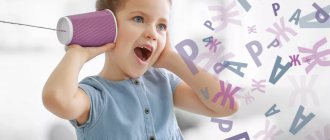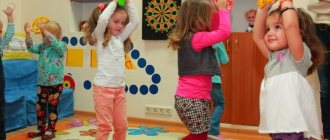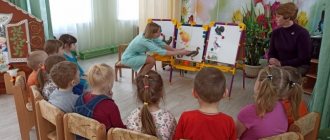The first sounds and words of a little man are quite funny and bring smiles to adults. However, no one will smile if they hear inverted words and incomprehensible phrases from an adult. Communication is an important element of our life. The ability to correctly and competently express one’s thoughts, the ability to clearly formulate answers to questions posed, as well as the ability to pronounce all sounds is something that not only children, but also adults should strive for.
Speech therapy classes for children at home
Speech therapy classes for children at home are constant communication with the child in a playful way. Once your child is interested, you can engage with him by playing games for speech development such as
- finger games (games for developing fine motor skills)
- articulatory gymnastics
- games for hearing development, games for sound vibration and logorhythmics (poems with movements)
- poems for speech development and vocabulary replenishment
The most difficult thing is to interest the child. And this is a very serious task. After all, sitting down a little fidget is not so easy. In general, it is not necessary to sit him down; you can work with the child when he is playing in his hut or jumping on the sofa. Classes should be held in a playful way. Then it will be easier for you, and the child will learn the material without hysterics and whims.
Are you looking for speech therapy classes for children 2 - 3 years old? A selection of the best exercises
A few tips before starting homeschooling with your children:
- classes should initially be short (2-3 minutes). Then we gradually increase them. Maximum 15-20 minutes at a time.
- The child should enjoy the activities. Don’t force or insist, as this can completely discourage your child from wanting to do anything.
- It’s better to practice more often, but little by little. Frequently performing the same exercise, the child develops a skill.
- use laughter during classes. Do not scold for incorrect pronunciation or if the child fails to do something. It’s better to find out with your child why his tongue is so naughty and how to fix it. It is better to be an ally and friend to a child than a strict teacher. Find out how to praise your child correctly here.
Learn more about speech therapy classes for children aged 5 - 7 years.
I would like to dwell in more detail on each of the types of games that you need to play with your child.
Individual correctional classes for preschoolers
For various reasons, the process of developing full pronunciation slows down for many children. Pronunciation defects will not be eliminated on their own; to eliminate them, you need systematic exercises with a specialist, as well as joint individual lessons at home.
A well-designed training system will definitely help. Individual speech therapy classes are conducted only after consultation and examination.
Speech therapy in the form of a game
General tips for practicing at home
After a detailed diagnosis of the speech of a preschool educational institution student, it is necessary to carry out correction and begin to engage in speech therapy tasks for children. Class time should not be more than 20 minutes. According to the theory of speech therapy, if you study more than you should, the material will not be fully absorbed.
In addition, speech therapists advise practicing while playing, since play is the main activity in the preschool period.
Note! Any speech therapy classes for correcting the pronunciation of sounds are built in the form of a game.
How to build a lesson
The child will learn the material better and will not get tired at all if the tasks are in the form of a game. In addition, when working with a kindergarten student at home, it is important to structure the process correctly:
- You need to start the exercises with 3 minutes, carefully increasing the exercise time to 20 minutes.
- Organize lessons correctly so that the child has a sincere desire to study.
- It is forbidden to force you to exercise - there will be no positive results from such exercises.
- You need to exercise often, but not for long.
- Do not criticize the child for failures (an important condition), do not shout, and treat with understanding.
Speech development program for preschoolers according to O. S. Ushakova.
We need to analyze any situation, find the reason why it doesn’t work out, and try to solve it together. There are many types of speech therapy exercises. For example, the online editorial office of Shakhovskaya and Volkova offers activities and games.
Finger games
Finger games are one of the types of development of fine motor skills. There is a close relationship between the human hand and the speech center of the brain.
Learning texts using “finger” gymnastics stimulates the development of speech, spatial thinking, attention, imagination, and develops reaction speed and emotional expressiveness. The child remembers poetic texts better; his speech becomes more expressive.
You need to exercise every day for 5 minutes, then such exercises will be effective.
Notes for the home speech therapist
There is absolutely no point in focusing on the purity of pronunciation. Minor speech impediments tend to resolve on their own over time. Sometimes they are associated with the anatomical features of the larynx, nasopharynx and tongue, and speech therapy gymnastics does not always help. As the child grows, most of these problems are eliminated automatically.
You should not start activities with your child if for some reason you are not in the mood and are not able to provide a light, cheerful atmosphere for the game; it is better to postpone it until better times. Always believe in your baby and show how happy you are at the slightest success. In addition to the immediate speech therapy effect, such activities can bring you and your baby even closer together and give you many interesting moments.
Articulation gymnastics
Articulation gymnastics is gymnastics for the tongue and lips. The tongue is the main muscle of the speech organs. The tongue must be trained and developed so that it can correctly perform certain specific movements, which are called sound pronunciation. Lips and tongue should be flexible and strong.
To perform articulation gymnastics you need a mirror. The child must see how his tongue works and where it is located. In order to bring the exercises to automaticity, you need to constantly practice. It is important to perform the exercises correctly and carefully monitor the position of the tongue.
You need to exercise every day for 5-7 minutes. Preferably 2 times a day. The result is correct and clear speech.
For correct sound pronunciation, it is also necessary to perform tasks that are aimed at developing the voice, breathing and speech hearing.
Sound R: right-wrong
The sound R is one of the most difficult sounds in the Russian language. To reproduce it, refined movements of the speech apparatus, sufficient vibration and amplitude of the tongue and other physiological “achievements” are required. It is not surprising that most children experience certain difficulties in forming the correct pronunciation of the sound R.
As a rule, there are not so many options for involuntary distortion of the sound R among the younger generation. The most common children's “bullying” of the sound R:
- The sound just skips and falls out. This is especially true for words where the sound P is between vowels: sa_ay (instead of barn), gа_azh (instead of garage), ma_oz (instead of frost);
- Instead of the sound R, the sound L, Y or Y is obtained: koyova (instead of cow), luka (instead of hand), klaska (instead of paint), yba (instead of fish);
- The sound R is pronounced recognizable, but not typical for the Russian language (bilingual children especially often “sin” with this). A child may not pronounce the sound “firmly”, as is typical for our speech, but, for example, grate (as is customary in French), or vibrate excessively (as is typical in English).
How to check the pronunciation of the sound R in a child? First, ask your baby to “growl” - in other words, say the sound R several times on its own, and not as part of any words. Then have the child repeat after you words like: crow, king, grass, order, etc. If the child is unable to pronounce the single sound R, then the first thing you have to do is to practice exactly this - teach the baby to pronounce the sound R by itself. If the child “growls” “excellently”, but pronounces the sound R incorrectly in words, then the correct pronunciation should be practiced primarily in the syllables: ra-ro-ru-ri-ar-or-ir, etc.
Games for sounds, hearing development and logarithmics
Speech or phonemic awareness is the ability to correctly hear, recognize and discriminate sounds.
Games for hearing development
1. “Ears are rumors”
Goal: consolidate the ability to differentiate sounds, develop auditory attention.
The speech therapist shows wooden and metal spoons and crystal glasses. Children name these objects. The teacher offers to listen to how these objects sound. Having installed the screen, he reproduces the sound of these objects in turn. Children recognize sounds and name the objects that make them.
2. “Who said “Meow?”
Goal: to improve the ability to distinguish the voices of domestic animals by ear.
Material: tape recorder, audio recording with the sounds of pets' voices.
The speech therapist plays an audio recording of the sounds of pets. Children must hear and name which pet has the voice.
The game “Who gives what vote” is played in a similar way. An audio recording with the sounds of forest birds is turned on.
3. “Who is standing at the traffic light?”
Goal: to develop auditory attention, recognize and name types of transport.
Material: tape recorder and audio recording with street noise.
The speech therapist plays an audio recording with street sounds. Children listen to sounds and name vehicles stopped at a traffic light (car, truck, tractor, motorcycle, cart, tram).
4. “Where is it ringing?”
Goal: to develop auditory attention, the ability to navigate in space with eyes closed.
Children stand with their eyes closed. A speech therapist with a bell moves silently around the group and rings. Children, without opening their eyes, point their hand in the direction of the sound source.
5. Finger game “Thunderstorm”
Goal: to coordinate movement with the text, taking into account changes in dynamics and tempo of sound.
The speech therapist reads the words of the game, and the children perform movements according to the text.
Drops are dripping (they knock on the table with two index fingers). It is raining (they knock quietly with four fingers of both hands). It pours like a bucket (they knock loudly with four fingers). It starts to hail (they knock with their finger bones, knocking out fractions). Thunder rumbles (drum their fists on the table). Lightning flashes (we draw lightning in the air with our fingers, make the sound sh). Everyone quickly runs home (clap their hands, hide their hands behind their backs). In the morning the sun is shining brightly (describe a large circle with both hands).
Speech imitation or onomatopoeia
- this is the reproduction, following the speaker, of the sounds, words, and phrases he has spoken.
Games for imitating the voices of animals and birds
To play, use animal figures or pictures. Mothers and their babies. After all, the mother frog screams KVA, and the little frog screams KVA. Remember the fairy tale about the three bears, papa bear growls loudly, mama bear is quieter, and the cub squeaks.
Games to imitate household noises:
- The clock is ticking - tick-tock
- Water is dripping - Drip-Drip
- The baby is stomping – TOP—TOP
- The hammer knocks KNOCK-KNOCK
- Scissors cut CHICK-CHICK
- We swing on the swing KACH-KACH
- We eat carrots CRUM-CRUM
- The car goes BI-BI
Speech therapy rhythmics or logorhythmics is a combination of movement, speech and music. The adult reads the verse and shows the movements, the child repeats. Nothing complicated. Children have fun and interesting. Of course, an adult needs to read and learn the necessary poems in advance and learn the movements to them. You also need to select musical accompaniment for the poems in advance. It is advisable to exercise in the afternoon 2-3 times a week.
Game “Walk” (development of general motor skills) Along a narrow path (walking in place) Our legs walk (raising our legs high) Over pebbles, over pebbles (shuffle from foot to foot at a slow pace) And into the hole... bang! (sit on the floor on the last word)
Breathing exercises for the formation of correct speech breathing
All exercises for logoneurosis are used for both adult patients and children.
The category of exercises against stuttering is aimed at developing the correct combination of inhalation and exhalation with pronounced sounds. During the lesson, melodiousness and fluency of pronunciation are trained.
How to breathe correctly when stuttering so as not to stutter?
"Flower shop"
The patient imagines himself in front of a flower shop window. One of his hands is on his stomach, the other is in a free position at the side.
Taking a short, intense breath through his nose, he “smells the flower.” At the same time, the stomach moves forward.
After holding your breath for a second, a long exhalation “pffff” follows through the oral cavity, the stomach and diaphragm go back.
"Candle"
A thin strip of paper about 5 cm wide represents a candle flame. The patient needs to blow on it for as long as possible.
"Singer"
You should sing vowel sounds, then their combination (aaauuuu, oooooooooo, etc.), a combination of sonorant consonants and vowels (laaa, mooo, etc.). Then singing is performed with increasing and decreasing volume of sound.
Psychological for voice development
Logoneurosis is associated with psychosomatics, an unstable nervous system, stress and anxiety, which provoke muscle and respiratory spasms.
When conducting training, it is important that the child or adult is calm and relaxed
A breathing exercise is perfect for this, with which it is recommended to start the lesson: you need to take a comfortable position and close your eyes. Take a deep, long breath through your nose. Hold your breath for a few seconds, counting to five and also exhale deeply. By repeating a simple technique five to seven times, the patient will be prepared for further practice.
Meditation gives effective results. Having taken a comfortable position, you need to relax and close your eyes, imagining something pleasant.
Calm music or sounds of nature in the background will help you achieve peace faster. Take a deep breath and let out a long “mmmmm” as you exhale.
Strelnikova method
The author’s method of A.N. is popular among speech therapists. Strelnikova. The exercises are easy to perform, allowing you to practice on your own at home. The exercises are aimed at activating the functions of the diaphragm and coordinating the rhythm of breathing.
"Palms"
When performed, the patient can stand or sit. The arms are bent at the elbows, palms are open.
As you inhale sharply, you should make a movement with your hands that imitates catching air, quickly clenching them into fists. After this, a long, smooth exhalation occurs.
Alternating inhalations and exhalations according to the following scheme: 4 approaches in a row, followed by a 4-second break.
"Epaulettes"
Performed while standing. Hands are clenched into fists and are at waist level. While taking a short breath, straighten your arms with several pushes, as if pushing the air down, while taking a few more short breaths.
"Pump"
Starting position: standing, feet shoulder-width apart. As you inhale, bend over, and as you exhale, return to the starting position.
Video about the development of speech breathing during stuttering:
Poems for speech development - tongue twisters and vocabulary replenishment
Tongue twisters are short rhyming phrases. Tongue twisters are the best exercises for practicing clarity and literacy of speech. Tongue twisters increase a child's vocabulary, improve diction, and also develop speech hearing.
In order for a child to speak competently and be able to express his thoughts and feelings, he needs his own vocabulary.
Your child's vocabulary consists of:
- passive vocabulary (those words that the child understands)
- active vocabulary (those words that the child speaks)
Initially, the child’s active vocabulary is small, but over time, the child will transfer those words that were in the passive dictionary to the active one. The larger the passive vocabulary, the better.
To increase your vocabulary, look at pictures together, read books, comment on your actions.
I use various manuals to work with my child; one of the latest successful acquisitions is “Big Album on Speech Development” and “Lessons of a Speech Therapist. Games for speech development."
You are the teacher of the year
Since children are great repeaters, at every opportunity, do not be lazy to show your child how well and skillfully you pronounce the sound R. In fact, you are your child’s best teacher and mentor.
Lean closer to him so that he not only hears you, but also sees the position of your lips and facial expressions. Most often, this is how children learn to pronounce sounds by imitating a carbon copy. Be a patient (and at the same time funny, smiling!) example for your child - and he will definitely master the correct pronunciation. And be patient - it can take from several days to several months to practice each exercise for producing the sound P.
As soon as you hear that your child can more or less successfully pronounce the sound R in exercises, start practicing syllables like “ra-ri-ru-ro” or “ara-tra-ura-or-mur” - that is, all sorts of combinations the sound P and vowels (so that the sound P itself is at the beginning of the syllable, and in the middle, and at the end). Then move on to individual simple words, such as “fish-hand-murzik-arka-ball-cow” and others (again, the sound P should appear in different places in the words). And only when the child pronounces words confidently and correctly, proceed to continuous speech.
Many parents perceive difficulties with pronouncing the sound R as a serious problem. They involve a host of pediatricians and speech therapists in the “trouble,” and they begin to frighten the child with future difficulties in communication... If you are a conscientious and loving parent, stop this “hysteria” in its infancy! Teach your child to deal with difficulties (including pronunciation) in a friendly, calm, and humorous manner. And if you manage to turn speech therapy into a fun game, you and your child will win in any case - either he will master the sound R, or he will learn to “tolerate failures” while remaining a confident person.
“Speech therapist lessons. Games for speech development"
This book consists of 3 sections, for each section detailed instructions are given on how to practice
- finger gymnastics 1 group. Exercises for the hands (pages 8-29)
- 2nd group. Finger exercises are conditionally static (pages 30-47)
- 3rd group. Dynamic finger exercises (pages 48-57)
I bought this book here. If you have questions about the book, please ask.
About rhymes and tongue twisters
Tongue twisters are a very effective type of exercise. They should be selected for those letters and sounds in the pronunciation of which the baby has the most serious gaps. There are many benefits from them - it is in improving diction, and in the development of speech hearing, and in expanding the vocabulary. In addition, it is interesting and fun for a child to pronounce short, funny rhyming lines.
Speech therapy gymnastics is continued in poetry, the task of which is to increase the amount of what is understood and pronounced. An active vocabulary, as you know, is what a child says, a passive one is what he understands. The second is always an order of magnitude more extensive. For general development and the transition from passive to active vocabulary, you should communicate a lot with your baby in any circumstances - on a walk, on the way to kindergarten, at the table, etc.
If you are not lazy and use the slightest opportunity for such communication, creatively weaving tongue twisters, games for hands and fingers, and articulation exercises into everyday life, then the result will definitely come.









